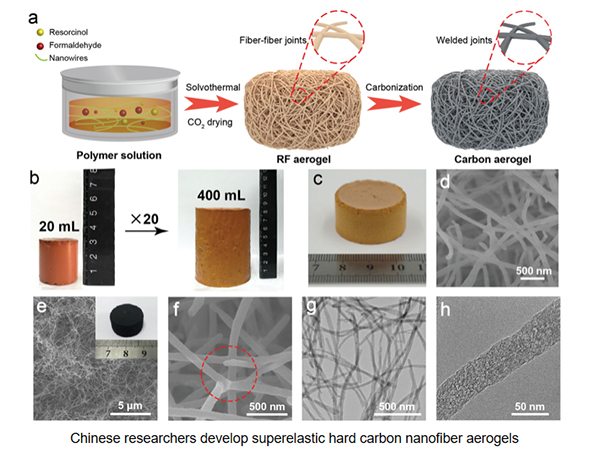
-
 Afrikaans
Afrikaans -
 Albanian
Albanian -
 Amharic
Amharic -
 Arabic
Arabic -
 Armenian
Armenian -
 Azerbaijani
Azerbaijani -
 Basque
Basque -
 Belarusian
Belarusian -
 Bengali
Bengali -
 Bosnian
Bosnian -
 Bulgarian
Bulgarian -
 Catalan
Catalan -
 Cebuano
Cebuano -
 China
China -
 China (Taiwan)
China (Taiwan) -
 Corsican
Corsican -
 Croatian
Croatian -
 Czech
Czech -
 Danish
Danish -
 Dutch
Dutch -
 English
English -
 Esperanto
Esperanto -
 Estonian
Estonian -
 Finnish
Finnish -
 French
French -
 Frisian
Frisian -
 Galician
Galician -
 Georgian
Georgian -
 German
German -
 Greek
Greek -
 Gujarati
Gujarati -
 Haitian Creole
Haitian Creole -
 hausa
hausa -
 hawaiian
hawaiian -
 Hebrew
Hebrew -
 Hindi
Hindi -
 Miao
Miao -
 Hungarian
Hungarian -
 Icelandic
Icelandic -
 igbo
igbo -
 Indonesian
Indonesian -
 irish
irish -
 Italian
Italian -
 Japanese
Japanese -
 Javanese
Javanese -
 Kannada
Kannada -
 kazakh
kazakh -
 Khmer
Khmer -
 Rwandese
Rwandese -
 Korean
Korean -
 Kurdish
Kurdish -
 Kyrgyz
Kyrgyz -
 Lao
Lao -
 Latin
Latin -
 Latvian
Latvian -
 Lithuanian
Lithuanian -
 Luxembourgish
Luxembourgish -
 Macedonian
Macedonian -
 Malgashi
Malgashi -
 Malay
Malay -
 Malayalam
Malayalam -
 Maltese
Maltese -
 Maori
Maori -
 Marathi
Marathi -
 Mongolian
Mongolian -
 Myanmar
Myanmar -
 Nepali
Nepali -
 Norwegian
Norwegian -
 Norwegian
Norwegian -
 Occitan
Occitan -
 Pashto
Pashto -
 Persian
Persian -
 Polish
Polish -
 Portuguese
Portuguese -
 Punjabi
Punjabi -
 Romanian
Romanian -
 Russian
Russian -
 Samoan
Samoan -
 Scottish Gaelic
Scottish Gaelic -
 Serbian
Serbian -
 Sesotho
Sesotho -
 Shona
Shona -
 Sindhi
Sindhi -
 Sinhala
Sinhala -
 Slovak
Slovak -
 Slovenian
Slovenian -
 Somali
Somali -
 Spanish
Spanish -
 Sundanese
Sundanese -
 Swahili
Swahili -
 Swedish
Swedish -
 Tagalog
Tagalog -
 Tajik
Tajik -
 Tamil
Tamil -
 Tatar
Tatar -
 Telugu
Telugu -
 Thai
Thai -
 Turkish
Turkish -
 Turkmen
Turkmen -
 Ukrainian
Ukrainian -
 Urdu
Urdu -
 Uighur
Uighur -
 Uzbek
Uzbek -
 Vietnamese
Vietnamese -
 Welsh
Welsh -
 Bantu
Bantu -
 Yiddish
Yiddish -
 Yoruba
Yoruba -
 Zulu
Zulu
Advancements in Flue Gas Desulfurization Technology for Enhanced Air Quality and Environmental Protection
Flue Gas Desulfurization A Crucial Technology for Environmental Protection
Flue gas desulfurization (FGD) is an essential technology used to reduce sulfur dioxide (SO2) emissions from industrial processes, particularly in power generation, where the burning of fossil fuels like coal and oil can lead to significant environmental pollution. As air quality concerns continue to escalate globally, the importance of FGD in mitigating the harmful effects of sulfur emissions cannot be overstated.
Sulfur dioxide is a primary contributor to acid rain, which can damage ecosystems, alter soil chemistry, and harm aquatic environments. Additionally, SO2 can cause respiratory problems in humans, making its reduction critical for public health. The implementation of FGD technologies has thus become a fundamental part of regulatory measures aimed at controlling emissions and protecting the environment.
The process of flue gas desulfurization typically involves the removal of SO2 from the exhaust gases produced during combustion. There are several methods employed in FGD systems, with the most common being wet and dry scrubbing. Wet scrubbing involves the use of a liquid sorbent, often a lime or limestone slurry, to absorb sulfur dioxide from the flue gases. As the gas passes through the scrubber, the SO2 reacts with the sorbent to form gypsum, which can be further processed into a commercial product.
In contrast, dry scrubbing systems utilize solid sorbents, such as lime or sodium bicarbonate, to capture sulfur dioxide. These systems tend to have lower water consumption and can be more suitable for regions where water resources are limited. While both methods effectively reduce SO2 emissions, the choice of technology often depends on specific plant requirements, regulatory standards, and economic considerations.
flue gas desulfurization

The effectiveness of FGD technologies has significantly improved over the years. Advances in materials science and engineering have led to the development of more efficient scrubbers capable of achieving SO2 removal rates of over 90%. These innovations not only help comply with stricter emission regulations but also contribute to sustainable energy practices.
Despite the benefits of FGD, the technology is not without challenges. The operation and maintenance of FGD systems can be complex and costly, particularly for older power plants. The disposal of byproducts generated during the desulfurization process, such as gypsum, also presents logistical and environmental considerations. Therefore, ongoing research and development are critical to enhance the efficiency and cost-effectiveness of FGD systems, as well as to explore alternative methods of sulfur removal.
In response to global climate change and air quality issues, many countries have implemented strict regulations on sulfur emissions. These regulations drive industries to adopt flue gas desulfurization technologies as a means of compliance. The transition to cleaner energy sources and the continued enhancement of FGD systems will play a pivotal role in achieving a more sustainable future.
In conclusion, flue gas desulfurization stands as a vital technology in the fight against air pollution and environmental degradation. As concerns over acid rain and public health rise, the importance of effective SO2 reduction measures becomes clear. Through advancements in FGD technology and increased regulatory support, industries can significantly reduce their environmental impact while contributing to a healthier planet. The successful implementation of flue gas desulfurization not only signifies progress in industrial practices but also underscores a commitment to environmental stewardship for generations to come.
Latest news
-
High-Quality Fiberglass Car Bodies Durable GRP Car & Boat Body SolutionsNewsJul.08,2025
-
High-Quality Fiberglass Dual Lamination Product Manufacturer Durable FRP & GRP Dual Lamination SolutionsNewsJul.08,2025
-
Rectangular Tank with Dimensions for GRP Calculation Custom Fiberglass GRP Rectangular TanksNewsJul.07,2025
-
High-Quality Fiberglass Weir Custom FRP Weir & Fiberglass Tanks ManufacturerNewsJul.07,2025
-
CPVC FRP Pipe A Reliable Choice for Industrial Applications High Strength & Corrosion ResistanceNewsJul.07,2025
-
Fiberglass Scrubber for Effective Cleaning and Stain Removal – Superior Performance in Various ApplicationsNewsJul.06,2025









